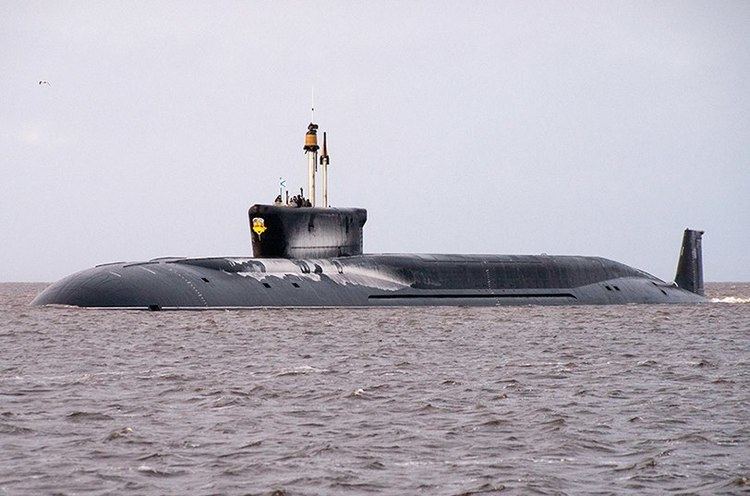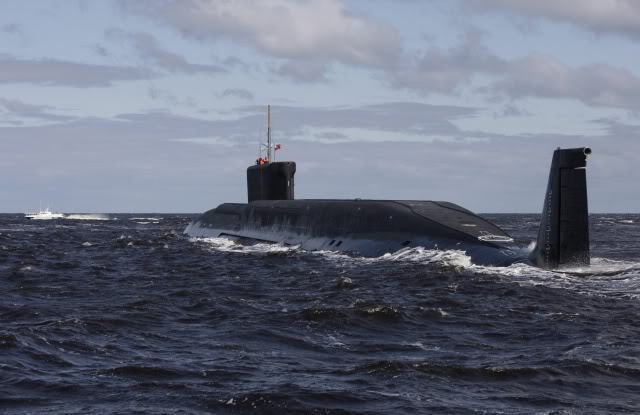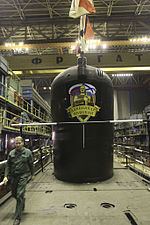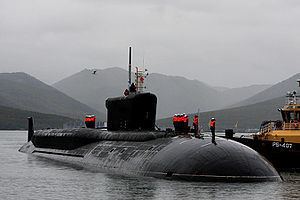Laid down 19 March 2004 Class and type Borei-class submarine Construction started 19 March 2004 Draft 10 m | Commissioned 23 December 2013 Length 170 m Launched 6 December 2010 Beam 14 m | |
 | ||
Displacement 14,720 t (14,488 long tons) surfaced24,000 t (23,621 long tons) submerged | ||
Russian submarine alexander nevsky k 550
Russian submarine K-550 Alexander Nevsky is a Russian nuclear ballistic missile submarine of the fourth generation Borei class (Project 955A). Named after the Russian saint Alexander Nevsky, the submarine was laid down in March 2004 and was first planned to be launched in 2009. However budgetary problems and repeated failures of the submarines main weapon, the Bulava SLBM missile, pushed the launch date forward. Russian officials have however claimed that the submarine has been completed on time and even ahead of schedule.
Contents
- Russian submarine alexander nevsky k 550
- Bulava slbms missile test firing on russian submarine alexander nevsky k 550
- Design and description
- Commissioning and deployment
- References

Bulava slbms missile test firing on russian submarine alexander nevsky k 550
Design and description

The submarine was to have been rolled out from its construction hall on 30 November 2010. This was postponed to December due to bad weather, according to the shipyard's press service. On 2 December 2010 the submarine was rolled out from its construction hall to floating dock and would be launched at an unknown future date. The submarine was inspected by the Russian Prime Minister, Vladimir Putin on 13 December 2010. With an estimated cost of 23 billion RUR (~$900 million USD), the new submarine has no significant differences from the lead ship, SSBN Yury Dolgorukiy.

On 24 October 2011 the submarine started its sea trials. It was planned to launch the first SLBM from Alexander Nevsky in 2012. The submarine entered service on 23 December 2013.
Commissioning and deployment

Russian Defense Minister Sergei Shoigu attended the launch ceremony at the Sevmash shipyard in the northern city of Severodvinsk.

In November 2013, the Defense Ministry said that delivery of the boat would be delayed until 2014 following the failure of an onboard missile system during sea trials in September. The malfunction was the latest in a string of eight failures of the new Bulava missile – developed for the new Borei-class submarines – out of a total of 19 or 20 launches. The new Borei-class boats are currently incapable of performing their primary role of nuclear deterrence while the Bulava has not yet been cleared for service, a navy command source said on November 1. Alexander Nevsky, with a length of nearly two football fields, can carry sixteen Bulava missiles, each fitted with up to ten independently targetable nuclear warheads. The first ship of the Borei class, Yury Dolgorukiy, entered service on 10 January 2013.

Ballistic missile submarines comprise one leg of Russia’s strategic nuclear triad along with land-based ICBMs and a bomber force. The Borei class is Russia’s first post-Soviet ballistic missile submarine class and will form the mainstay of the strategic submarine fleet, replacing aging Typhoon, Delta-3 and Delta-4-class boats. Russia ultimately expects eight of the type to enter service by 2020. Russia plans to build a total of eight Borei submarines by 2020, but it is uncertain how many of these will be in the Northern Fleet and how many in the Pacific Fleet. The first vessel, Yury Dolgorukiy arrived at its home base in the Northern Fleet in September 2013, while the next two are undergoing final testing.
Alexander Nevsky, the second Borei-class vessel, has been commissioned into the Russian Navy, a Russia’s Defense Ministry source told the TASS news agency on 14 April 2015. The submarine passed all its trials, including the test firing of its Bulava SLBMs.
Alexander Nevsky transferred from the Northern Fleet to the Pacific Fleet and arrived in the port of Vilyuchinsk, in the Kamchatka Peninsula on 30 September 2015.
By 10th October, 2016, K-550 had reached the Russian region of the Sea of Japan. It surfaced near a tiny Russian fishing craft, almost sinking the boat and it's crew of two fishermen. They filmed K-550's surfacing and their video went viral in Russia and made world news.
